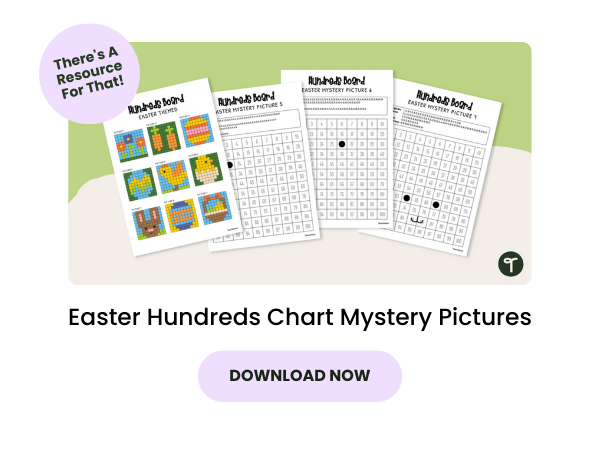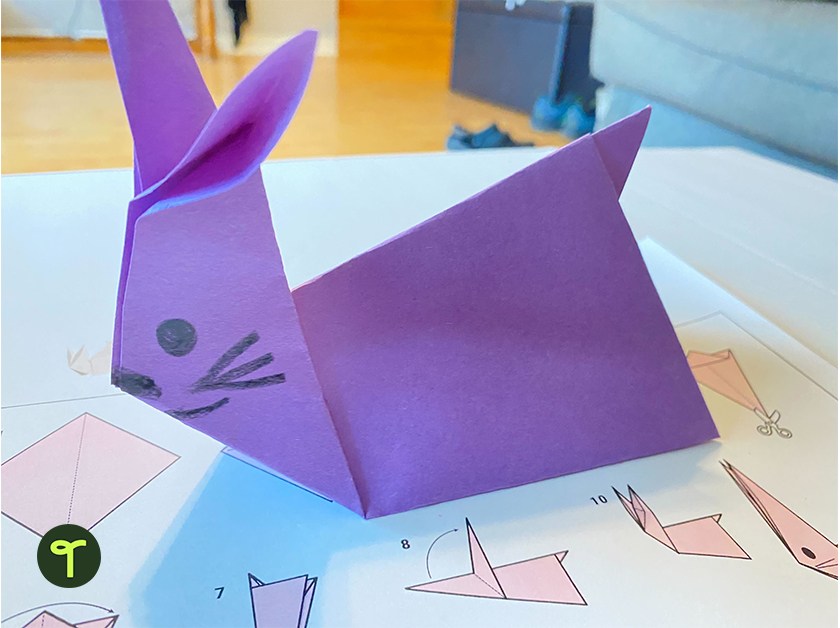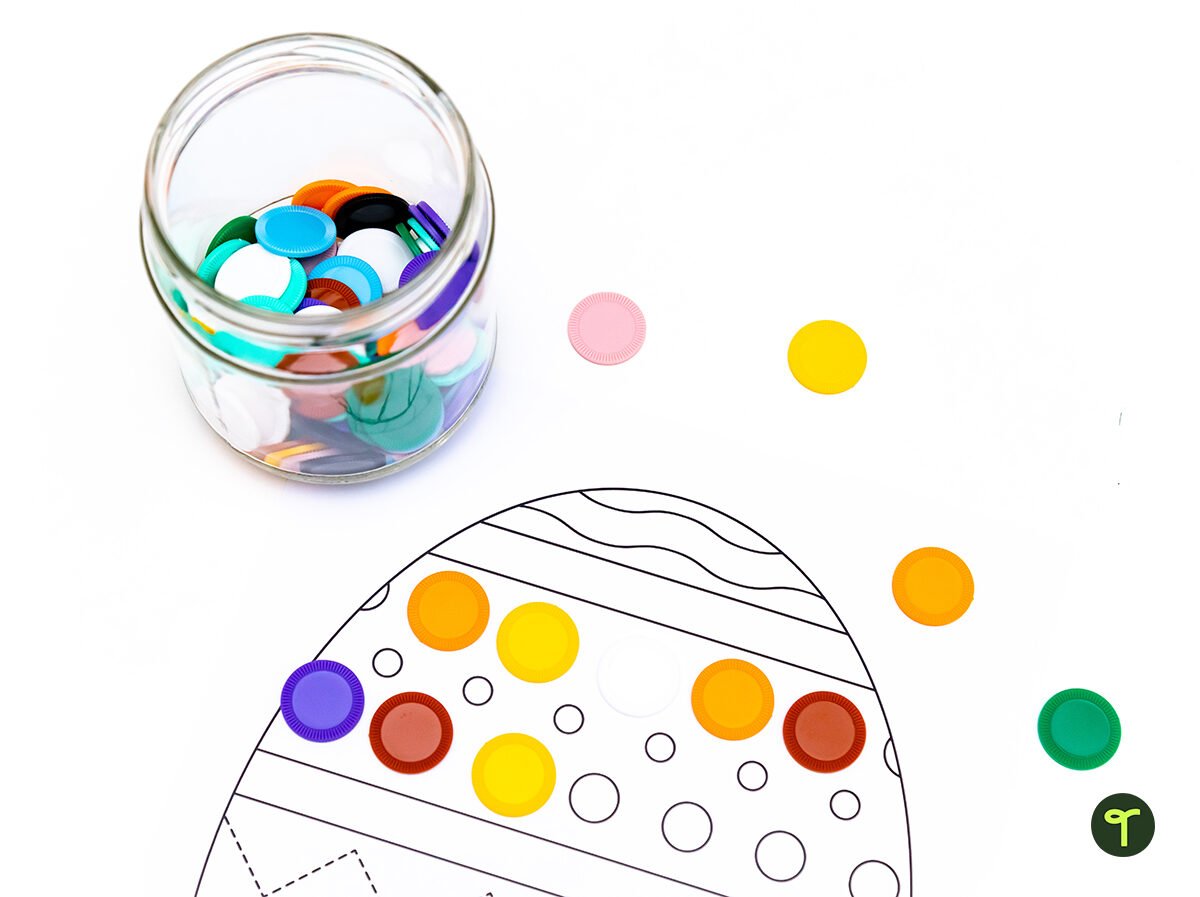There are plenty of Easter math activities you can use this spring in your classroom from counting eggs to pulling out jellybeans for some “snacktivities”! Seeing tons of chicks, bunnies, and eggs everywhere you turn? Why not put them to good use?
We put the Teach Starter teacher team on the (egg) hunt for some ways to inject some Easter themes into math lessons for kids throughout elementary school, plus math center activities that have a bit of a bunny twist! You’ll find options on this list that can be done in the classroom without a focus on the holiday for a more inclusive activity — not to mention ideas that you can use any time of the school year!
Need Easter activities in a hurry? Hop over to our entire Easter collection.
Easter Math Activities for Kids
Easter Egg Fill and Count
Stock up on plastic Easter eggs from the dollar store, and you’ve got the makings of dozens of Easter math activities. Your youngest learners can start by cracking open eggs you’ve filled with small items like jellybeans to practice counting and subitizing. For older kids, fill eggs with coins, and have them add up the value.
There’s more where that came from: Check out 22 easy ways to use plastic Easter eggs in the classroom including Easter egg roll measuring, matching capacity, and more!

Fraction Egg Hunt
Use the split sides of an Easter egg to help students better visualize the numerator and denominator of fractions. Hide the plastic Easter eggs around the classroom or outside, making sure each egg contains a fraction piece (e.g. 1/2, 1/4, 3/4, etc.).
Once all eggs have been found, have students work in pairs or small groups to match the fraction pieces together and represent them visually on paper using markers and scissors. Have each group present their fractions and discuss any similarities or differences between the visual representations.
Easter Addition and Subtraction
Take addition and subtraction to the next level by giving it an Easter eraser twist.
In this Easter math activity, students represent and solve simple addition and subtraction problems using various strategies, including counting on, partitioning, and rearranging parts. They also develop a range of mental strategies for addition and subtraction problems. You will need:
- dice
- mini-whiteboards
- Easter erasers (available at the dollar store)
Ask your students to:
- generate two numbers by rolling a pair of dice
- collect the corresponding number of erasers for each number rolled
- write an addition number sentence to represent the problem
- calculate the total number of erasers and complete the number sentence
- explore the commutative law for addition a + b = b + a
- write a word problem to match the number sentence
Easter Number Identification: Hundreds Chart Mystery Pictures
Practice number identification with your young mathematicians, and add a hint of mystery to your math centers with a hidden picture activity. Following the coloring guide, students can reveal chicks, bunnies, and more Easter-related pictures.
Bunny Ears Measurement
Practice working with informal measurements in the form of bunny ears (you can draw them yourself or print off this bunny craft template to save time).
Pass out the Easter bunny ears to each student, and have them measure the length and width of the bunny using both a ruler and non-standard units. Encourage your students to be creative with their non-standard units and discuss the advantages and disadvantages of using them compared to using a ruler. Have students compare and contrast their measurements with their classmates, discussing any discrepancies and possible reasons for them.
Bunny Origami Activity
Take a mindfulness break with your students with some origami time that helps them learn about 2D shapes! This fun bunny rabbit origami may not scream “Easter,” but that’s what makes it perfect for a springtime activity! It’s a nice way to bring some Easter math into the classroom in a way that isn’t focused on the holiday — making it more inclusive.
Print a copy of the step-by-step rabbit origami instructions for each student to follow along.
You can also watch a rabbit origami video demonstration here!
Easter Egg Estimation & More
Easter eggs abound, so put them to work! Print these dotted Easter eggs for a host of math activities, including:
- Reinforce one-to-one correspondence. Encourage your students to count each dot on the egg only once with one touch per object. Use concrete materials such as counters to support less confident learners.
- Practice estimation. Have students estimate the number of counters they will need to cover each circle on the template. Then, have them check their guess!
- Investigate and describe patterns formed with counters.
Easter Basket Capacity
Hit the dollar store, and stock up on Easter baskets for some estimating and capacity measurement activities. You can ramp up the enthusiasm even more if you brave it and use Easter treats.
Things to do:
- Stock up on five different Easter-themed objects such as chicks, bunnies, and perhaps some treats such as small chocolate eggs, medium chocolate eggs, and you’ve guessed it, large chocolate eggs (be mindful of food allergies).
- Set up 5 workstations, with each station including a pile of one type of Easter object/treat and at least one of the students’ baskets.
Your lesson might look something like this…
- Ask the class, “What am I measuring if I want to know the capacity of the basket?” Discuss.
- As a class, estimate how many objects/treats will fit into the basket. Record the estimates on the board.
- Model how to fill the basket, demonstrate how the treats must be arranged, and explain that the treats cannot go past the top.
- Divide the class into small groups. Each group is assigned a station.
- Students fill the basket, count how many treats fit inside and put the information inside their data table.
- After 5 to 10 minutes, students neatly unpack the basket and rotate to the next station. Have students rotate through all of the stations.
Banner image via shutterstock/Studio.G photography











Comments